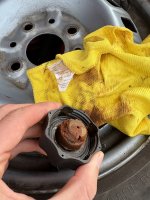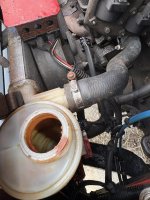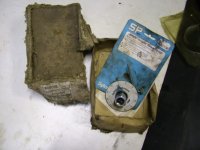tobywood13
Member
Hi all, I have a feeling that my head gasket has just blown. Car suddenly got very hot, I pulled over and saw that some brown water had sprayed around the vicinity of the radiator cap. The rad is empty, with brown sludge on the cap. Can’t see a sign of a leak anywhere else.
I’ve recently replaced all hoses, radiator, water pump, and thermostat to address a constant loss of water, and since the pump (last thing I did) it’s functioned fine without any obvious leaks. This happened at 60mph with no signs of overheating. Coolant was changed recently.
It has been taking slightly longer to start recently, just a few seconds, so may have been leaking coolant into the cylinders. Is this likely a head gasket?
I can’t see any mayo on the dipstick or the oil cap, just this sludge in the radiator.
I’m stood next to it waiting for assistance, and can hear a glug coming from the radiator every few seconds.
I’ve recently replaced all hoses, radiator, water pump, and thermostat to address a constant loss of water, and since the pump (last thing I did) it’s functioned fine without any obvious leaks. This happened at 60mph with no signs of overheating. Coolant was changed recently.
It has been taking slightly longer to start recently, just a few seconds, so may have been leaking coolant into the cylinders. Is this likely a head gasket?
I can’t see any mayo on the dipstick or the oil cap, just this sludge in the radiator.
I’m stood next to it waiting for assistance, and can hear a glug coming from the radiator every few seconds.
- Model
- CLX
- Year
- 1993








